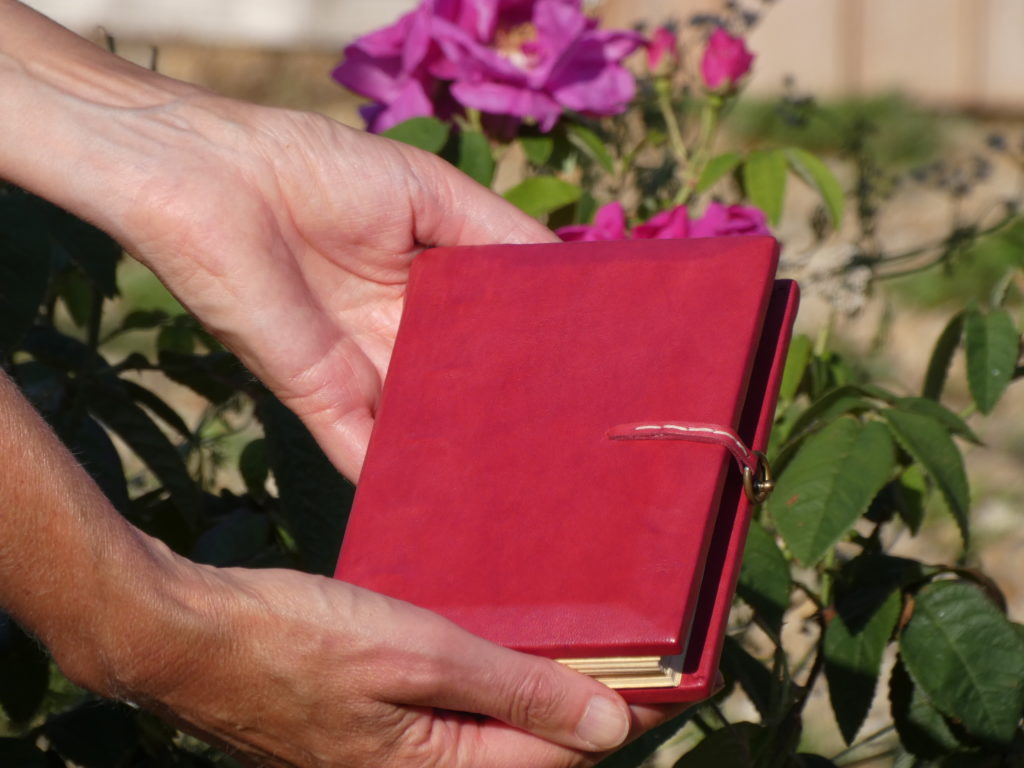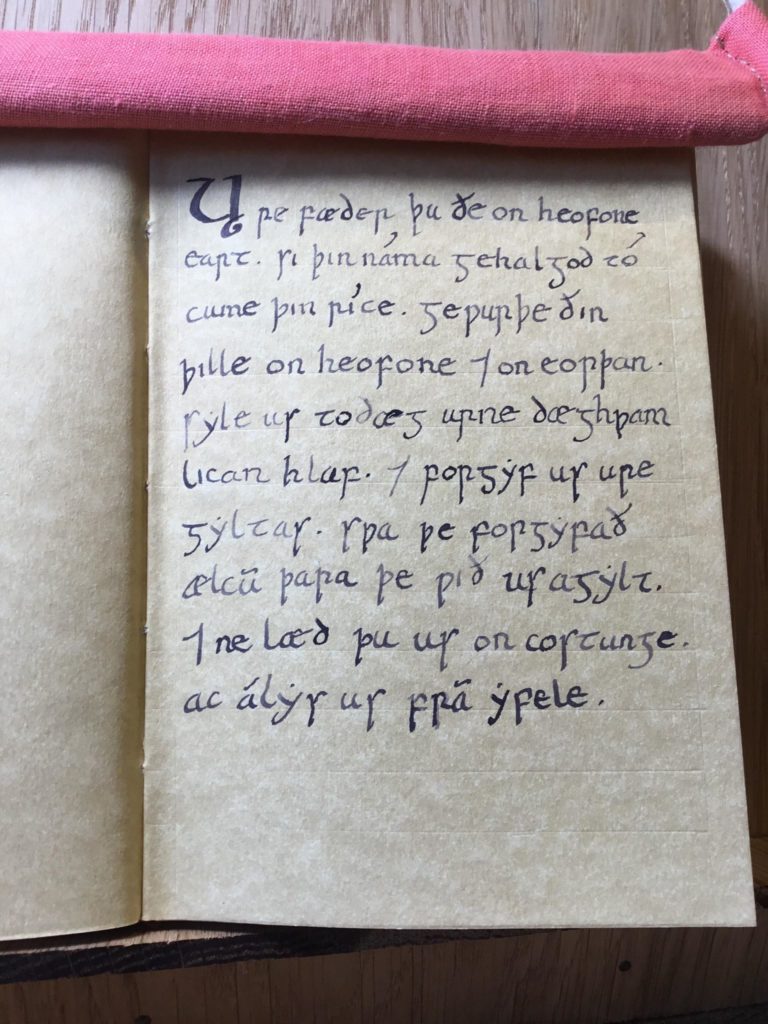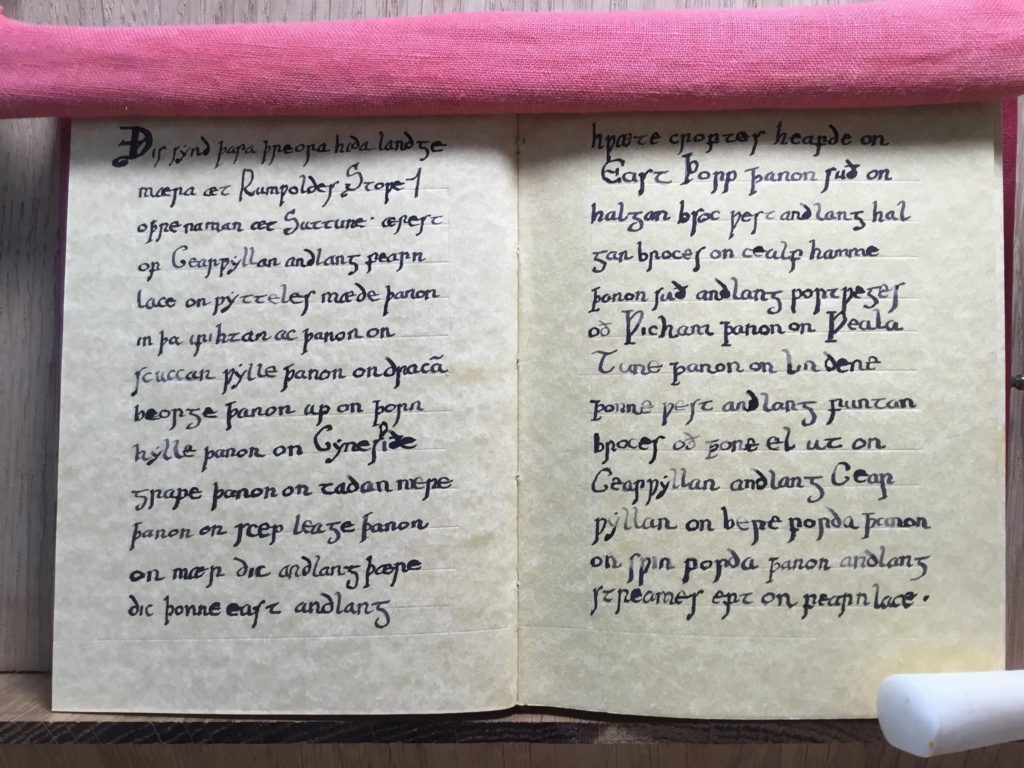The monastery’s first, and to date only, book was made by Fiona Wagstaff, whose website can be found here. It is approximately 150mm x 100mm and is bound in a Coptic style as used on the St Cuthbert Gospel in the British Library, dating from the end of the 7th century. The boards are wood with an ox-blood red leather covering – and the leather is plain, because we are a relatively humble monastery. There is a ring and pin closure suitable for our 10th century date. The leaves are paper in a parchment style.


This first page has been written by Wynflaed using a quill pen, the feather having being shed by one of the neighbours’ geese. The ink is an authentic oak gall ink. The text is the Lord’s Prayer in Old English. Unlike most versions I’ve seen on the internet, this is a copy of one specific text not a mashup. It was copied from the manuscript known as Cotton MS Otho C I/1. I saw the actual book, open at the Lord’s Prayer, in a major exhibition at the British Library in 2019, so I feel particularly attached to this version. This manuscript dates to the 1st half of the 11th century-Mid 11th century, and contains an imperfect Gospel-book, written in Old English (the so-called ‘West Saxon’ version of the Gospels). It was copied in the 1st half of the 11th century. In the mid-11th century, an Old English translation of a bull of Pope Sergius which benefitted Malmesbury Abbey was added between the Gospels of St Luke and St John (68r-69v).
The digitised manuscript is online. Use the arrow just above the top right of the scanned page to select the page with the prayer: f.38v.
The prayer starts five lines below the red star. Here is a transcription of the text:
Ure fæder þu ðe on heofone eart. si þin nama gehalgod to cume þin rice. gewurþe ðin willa on heofone ⁊ on eorþan. syle us todæg urne dæghwamlican hlaf. ⁊ forgyf us ure gyltas. swa we forgyfað ælcũ þara þe wið us agylt. ⁊ ne læd þu us on costunge. ac alys us frã yfele.
My scholarly friends inform me that the tilde above a final vowel often stands for a final ‘m’, so ælcũ stands for ælcum, and frã for fram. ⁊ is shorthand for ‘ond’, meaning ‘and’.
Because this book is as authentic as we can reasonably make it, there is one scribal error, ‘wille’ instead of ‘willa’. This was totally A Thing and we did it on purpose.
The Lord’s Prayer is followed in the book by Sister Æscwynn’s draft charter for the Rumwoldstow land grant.
